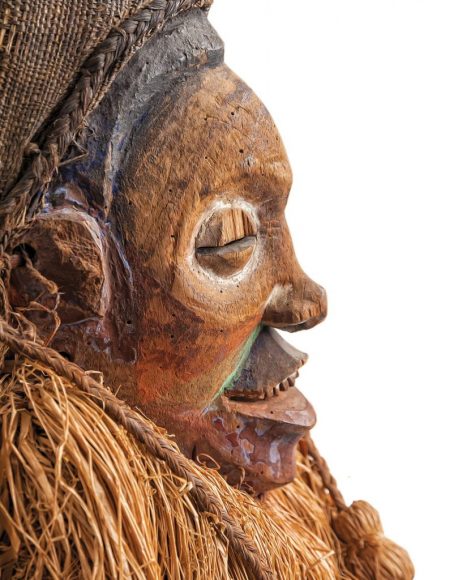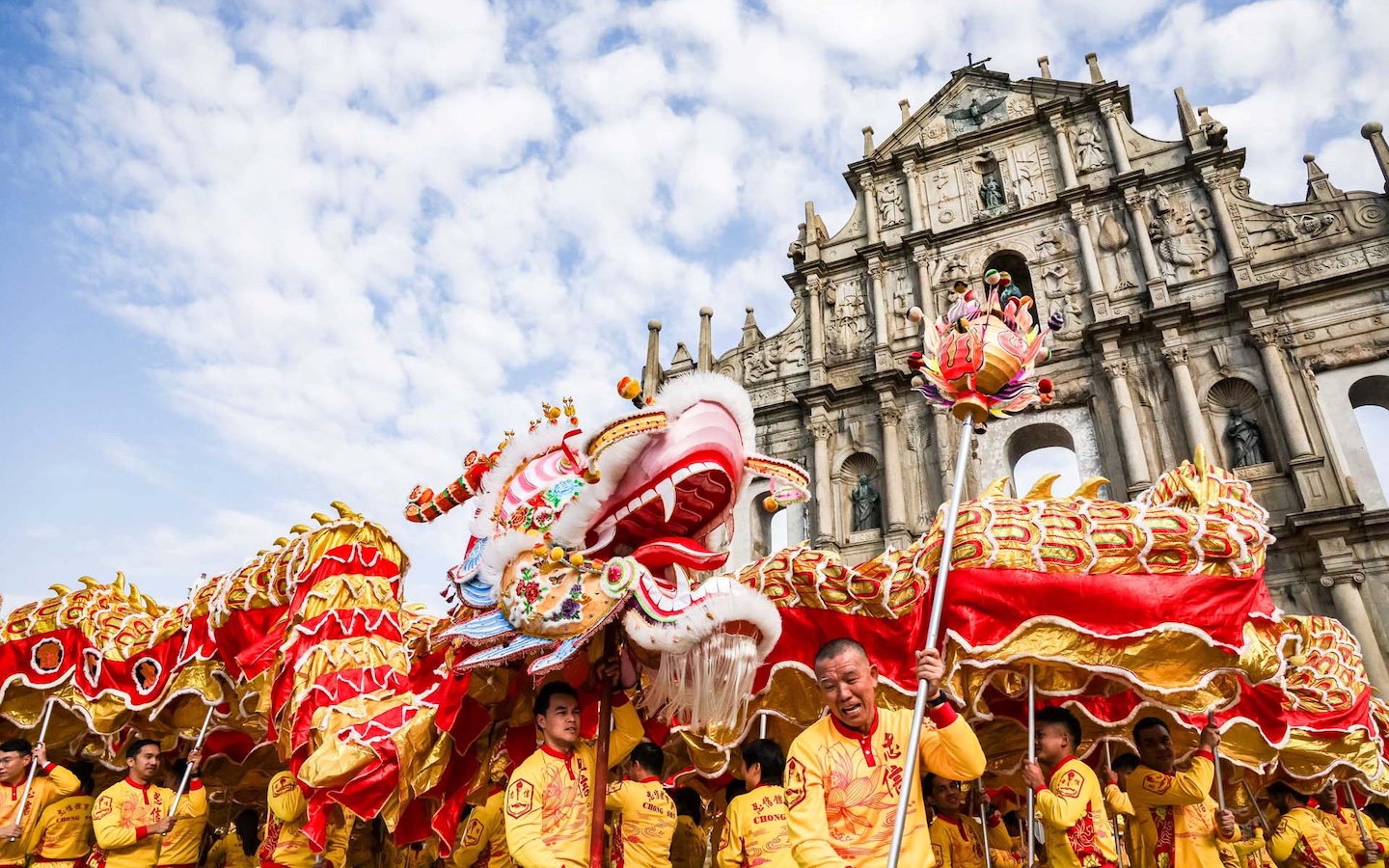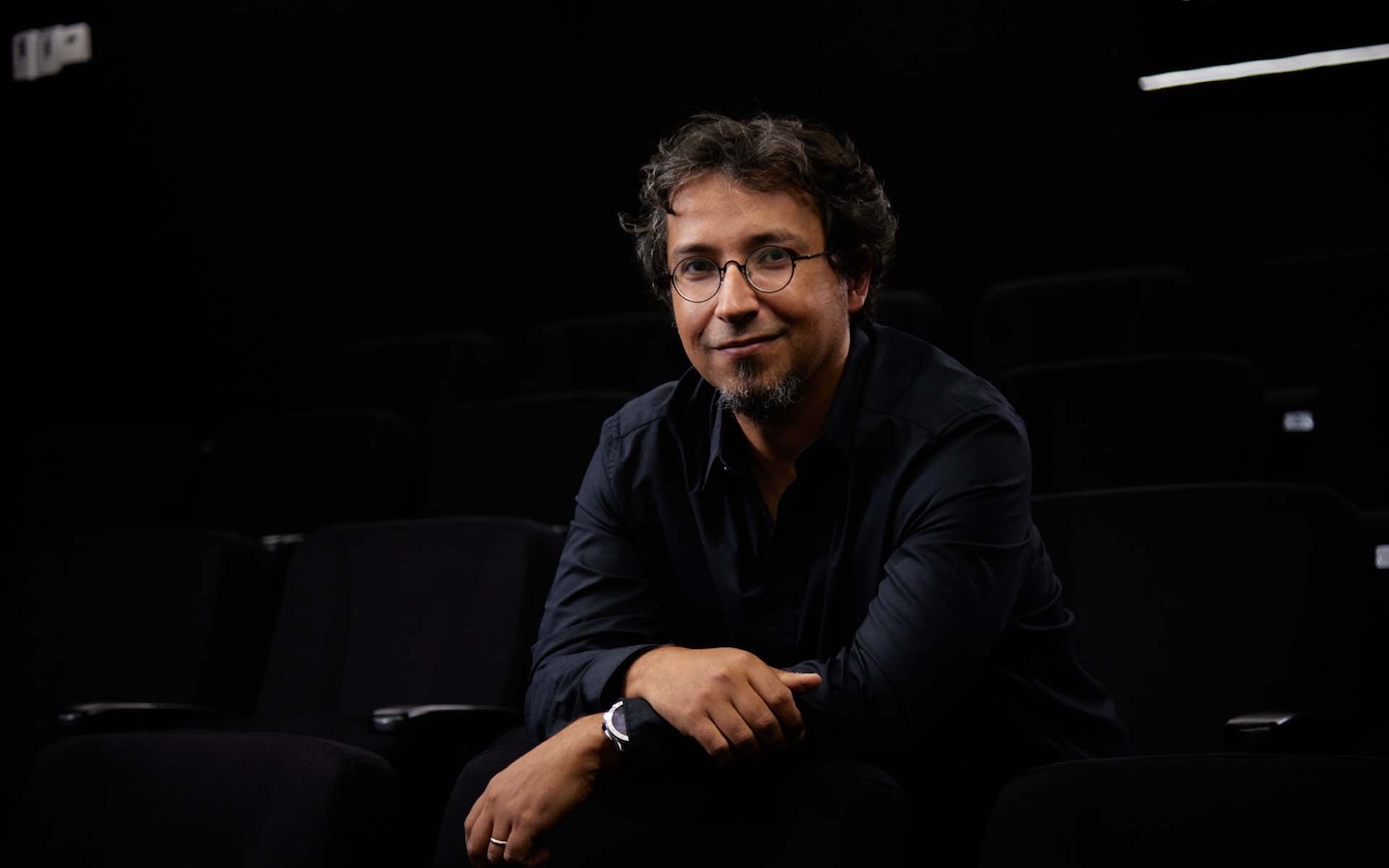Examining the art of indigenous people over thousands of years can tell us a lot about history and culture. We look at works from Portuguese-speaking countries and ask whether Macao can ever have a museum to display such pieces in public.
Art has been around for at least 10,000 years. It has taken many forms, from paintings on cave walls to dead sheep suspended in formaldehyde. But, whatever the medium, age and location, one thing is for sure: you can tell a lot about a culture when you look at its art. As the late anthropologist Claude Lévi-Strauss said, objects matter.
When it comes to the eight Portuguese-speaking countries across the globe, there is a wealth of art stretching back over thousands of years, each piece telling a story about the indigenous peoples of these lands. From the intricate wood carvings by the Makonde people in Mozambique and the beautiful fabric weavings of Timor-Leste to the ornate masks from Guinea-Bissau and the famous Angolan dolls, there is a cultural history to be discovered, admired, displayed and retold.
Macao would be an excellent place to discover these pieces of art from long ago. It is a Portuguese-speaking territory itself, it is seen as a strong link between Portuguese-speaking countries and China, and it is steadily growing into a hub for the arts, shown by the current five-month Art Macao festival. However, it is yet to have a museum like, for instance, Lisbon’s National Museum of Ethnology, where locals and tourists can see artistic treasures from Portuguese-speaking countries across the world. But this does not mean that some people in the city aren’t talking about it.
Rodrigo Brum, deputy secretary-general of Macao’s Permanent Secretariat of Forum for Economic and Trade Cooperation Between China and the Portuguese-speaking Countries – better known as Forum Macao – agrees that the city could easily become a platform to showcase indigenous art. “Part of our strategy,” he says, “includes showcasing the culture of each participating country. The sharing of ideas and art is a big part of this. The Macao government has given prominence to the creative industries and I believe that the SAR has all that it needs to serve as a platform to showcase indigenous art.”
Brum says that Forum Macao ‘has been serving as a platform between China and the Portuguese-speaking countries’ since its foundation in 2003 and he notes that, despite its long formal title, its role goes well beyond economic objectives. He claims that the forum is currently building new facilities in the city that will house some indigenous art but he stops, for the moment, at hinting on the development of an actual museum for the public to explore in the future. “I can say,” he concludes, “that the new Forum Macao facilities will have dedicated areas to allow each of the participating countries to exhibit what is probably its most important cultural legacy: art.”
Telling a historical story
Indigenous art can, as Brum suggests, be described as a country’s most important cultural legacy as artistic objects can document a history. The influence of indigenous art, specifically of African origin, on contemporary modern art has been well documented. Pablo Picasso’s ‘African Period’, between 1906 and 1909, paved the way for Cubism. His discovery of African artefacts is said to have inspired him to paint Les Demoiselles d’Avignon in 1907, a painting that has been described as ‘proto-cubist’. Whether you look at it from a scientific point of view, using indigenous art to interpret a culture, its rites and stories, or as a mere admirer of the artisan’s work and dexterity, it is clear that it must hold its own place in culture.
Paulo Costa, director of the National Museum of Ethnology in Lisbon, says that one of the most important functions of an anthropologist or museologist is ‘precisely that of showcasing the multiple dimensions’ that an object like a piece of indigenous art ‘can represent in its original context or, in other words, in the culture responsible for having created it’. “Without the context of culture and information on what surrounds it,” he adds, “there is no possibility of understanding the ‘feelings’ that were embedded by the culture that produced such an object.”
Music from Portugal
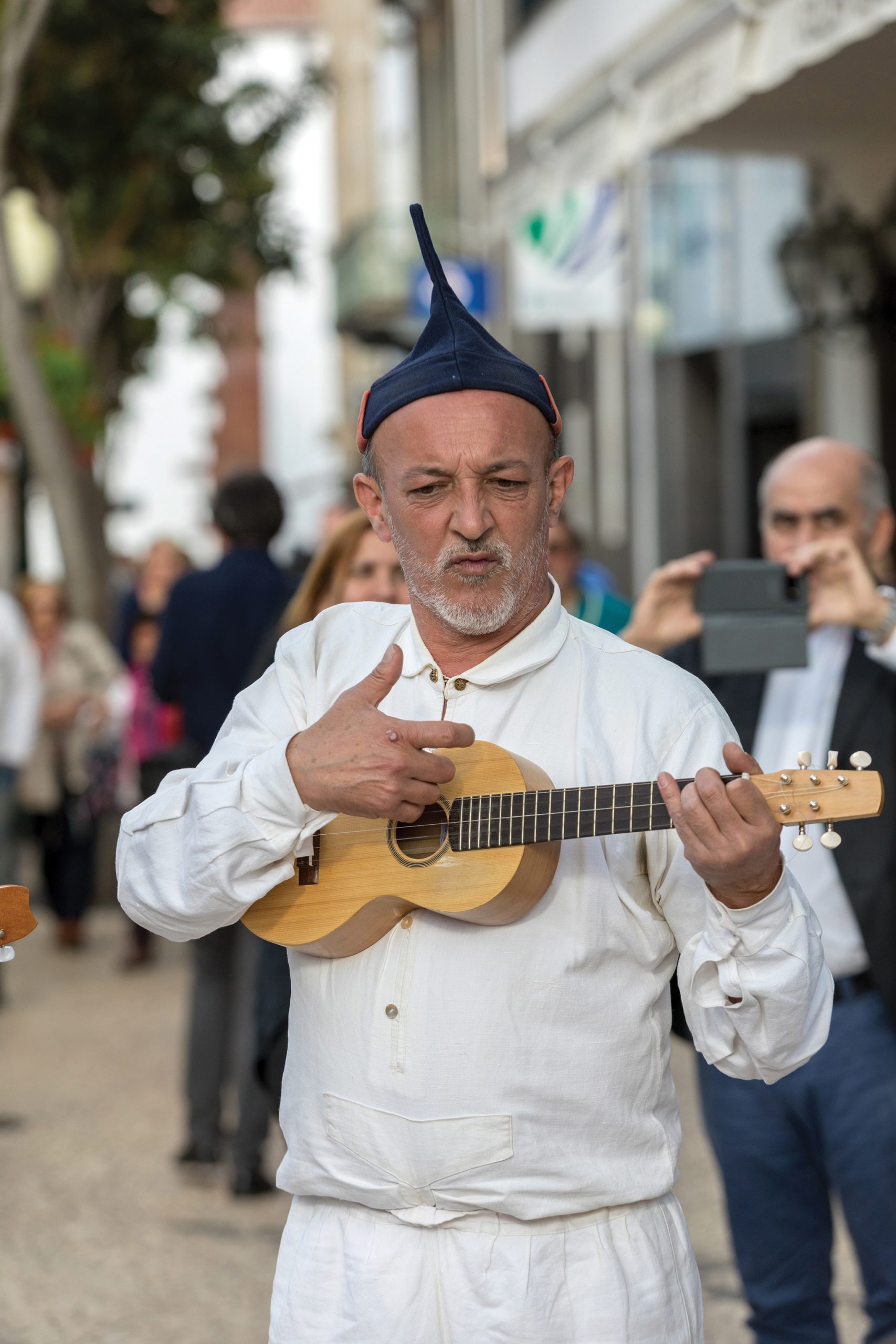
What art is out there that Macao could exhibit? Our journey begins in Portugal. Costa says that among the 40,000 items at the National Museum of Ethnology, his favourite is its collection of traditional Portuguese artefacts. “This has nothing to do with nationalism,” he assures us, “but it is a testament to the work of our museum and to the dedication of our team.” Among the collection, he says, there is a special display dedicated to traditional musical instruments. In fieldwork that took five years to complete, between 1960 and 1965, the team managed to survey teachers, priests and other experts in traditional music and folk culture and amass items like Portuguese string and percussion instruments.
Music plays an important role in almost all rural communities. It has a recreational dimension but it is also through music that communities gather round to share ideas and stories, relax and get to know each other. The traditional fado guitar is well-known but there are other instruments particular to Portugal. One of them is the cavaquinho, a small four-stringed instrument that is thought to have directly influenced the development of the ukulele in Hawaii after it was introduced there in the late 19th century.
While there is a wealth of indigenous art stretching across the ages from across the globe, there is something special about the art in Portuguese-speaking countries. There can be no doubt that Macao is in an excellent position to showcase all the wonders these countries have to offer. Indigenous art lives in a sacred place between beauty and the necessity of the everyday. Life, ritual and magic all play an important role in these historical objects. They are much more than just decoration. They are storytellers.
The special weaving of baskets and the meticulous work that goes into creating darts with feathers ‘are but the way of life these people and their ancestors are used to experiencing’, adds Silva. The same goes for the extraordinary effort that goes into preparing community members for rituals, he says, whether it is creating intricate body painting or adding feathers to the ornamental headbands or ‘diadems’.
Silva says: “These unique artefacts serve a dual purpose. On the one hand, they show us the way in which a community lives, telling us about their rituals and habits. On the other hand, they showcase the aesthetic sense of whomever has created the object.” That is why creating a platform in Macao to showcase this type of art is, as he puts it, ‘necessary’.
Silva also mentions that one of Brazils’ Pataxó people, Nitinawa Pataxó Pataxó, visited Macao in 2014 to attend events she had been invited to and to give a talk at the University of Macau. “She is a very active voice for her community, fighting for their rights and protection,” says Silva. “At the time, she paraded in full traditional costume and brought artefacts.” He says her visit was successful, ‘proving there is a public for these initiatives’ in the city. “Nothing bad can come from sharing culture or art,” he says. “In the end, this is what brings us together and what makes us see each other as humans.”

The magic of theatre
The African islands of São Tomé and Príncipe were uninhabited until their discovery by the Portuguese in 1470. “However, they were only truly ‘colonised’ in the 16th century,” explains Dias, who says the nation became an important centre for the Portuguese as a ‘commercial stopover in the Atlantic Ocean’. “Coffee and sugar grew well in the islands as they are so close to the equator,” she adds.
As a result, the art history in São Tomé and Príncipe stems from the late 15th century onwards. “I strongly believe,” says Dias, “that its most interesting and unique art is its tradition of theatre. European in nature, mostly in its themes, the ‘tchiloli’, meaning ‘theatre’ in the local language, derives from 11th century Carolingian tradition, from the time of the Frankish dynasty that was established to rule western Europe in the eighth and ninth centuries. Actually, Charlemagne, the King of the Franks and Holy Roman Emperor during that time, is the theme of the most famous piece in the islands. ‘The Tragedy of the Marquis of Mantua and the Emperor Charlemagne’ is a play written in the 16th century by the blind Madeiran poet Baltazar Dias but it was adapted in São Tomé
and Príncipe and has become African in the way the story is told. The play can last for days, reminiscent of the storytellers in native societies.”
Actors use unique masks, made of thin nets, with facial expressions painted on them, explains Dias, when performing these plays. “The costumes are often actually from the 16th century,” she adds. “They are kept in the families over the years and are exquisite. Only the men can act, however, following European medieval tradition.”
Poetry, music and clay in the Cape
Similar to São Tomé and Príncipe, Cabo Verde, off the coast of West Africa, was also only inhabited for the first time when the Portuguese arrived in the 15th century. For this reason, it is difficult to speak of ‘indigenous art’. There are, however, many examples of traditional artistic expressions from that time right up to the present day in the 10-island archipelago. The unique miscegenation of African and European cultures led to rich literary traditions, such as the poetry of Jorge Barbosa in the mid-20th century, and musical works, like the songs voiced by Cesária Évora in the 1980s and 1990s.
On one of the islands, Boa Vista, pottery is an important art. Although it started mainly as a way of producing domestic utensils, the unique way in which the clay found on the island was moulded by hand, without the help of a wheel, made it popular for tourists and became an essential part of the island’s economy. Over the years, the craft has been threatened due to modern methods replacing tradition, however, recently young artists are once again becoming interested in the traditional art in a bid to keep it alive.
Weaving away in Timor-Leste
“Legend says that Timor-Leste – until not long ago the newest country in the world – was born out of the body of an old crocodile who sacrificed his life to save the young boy travelling on his back,” says Gonçalo Cordeiro, a specialist on the Portuguese-speaking world based at Université Paris Nanterre who lived in Timor-Leste for a few years and later taught at the University of Macau. He notes that the beautiful peninsula in the Indian ocean is home to the ‘tais’ cloth, a unique woven fabric produced by local women.
Cordeiro says: “Traditionally, men wear the ‘tais mane’, holding it around the waist, whereas women carry the ‘tais feto’, a type of long, sleeveless dress. The colours and patterns vary according to the region but some rules apply. Red, symbolising courage and blood, is preferred and black shows the wearer’s status – the more the colour shows, the more important the person is. Gold is reserved for rituals or special occasions, and births, weddings, funerals, presenting a new home or community events call for specific types of ‘tais’.”
Made of cotton and woven by hand, the ‘tais’ also plays an important role in the livelihood of the communities in Timor-Leste. Everyday objects are now being produced in the traditional fabric, that has retained its magic. “It would be great if we could see a greater amount of Timor-Leste indigenous art in Macao,” concludes Cordeiro. “The two regions have collaborated so much. It would be great if locals could also see and learn more about the nearest Portuguese-speaking country.”
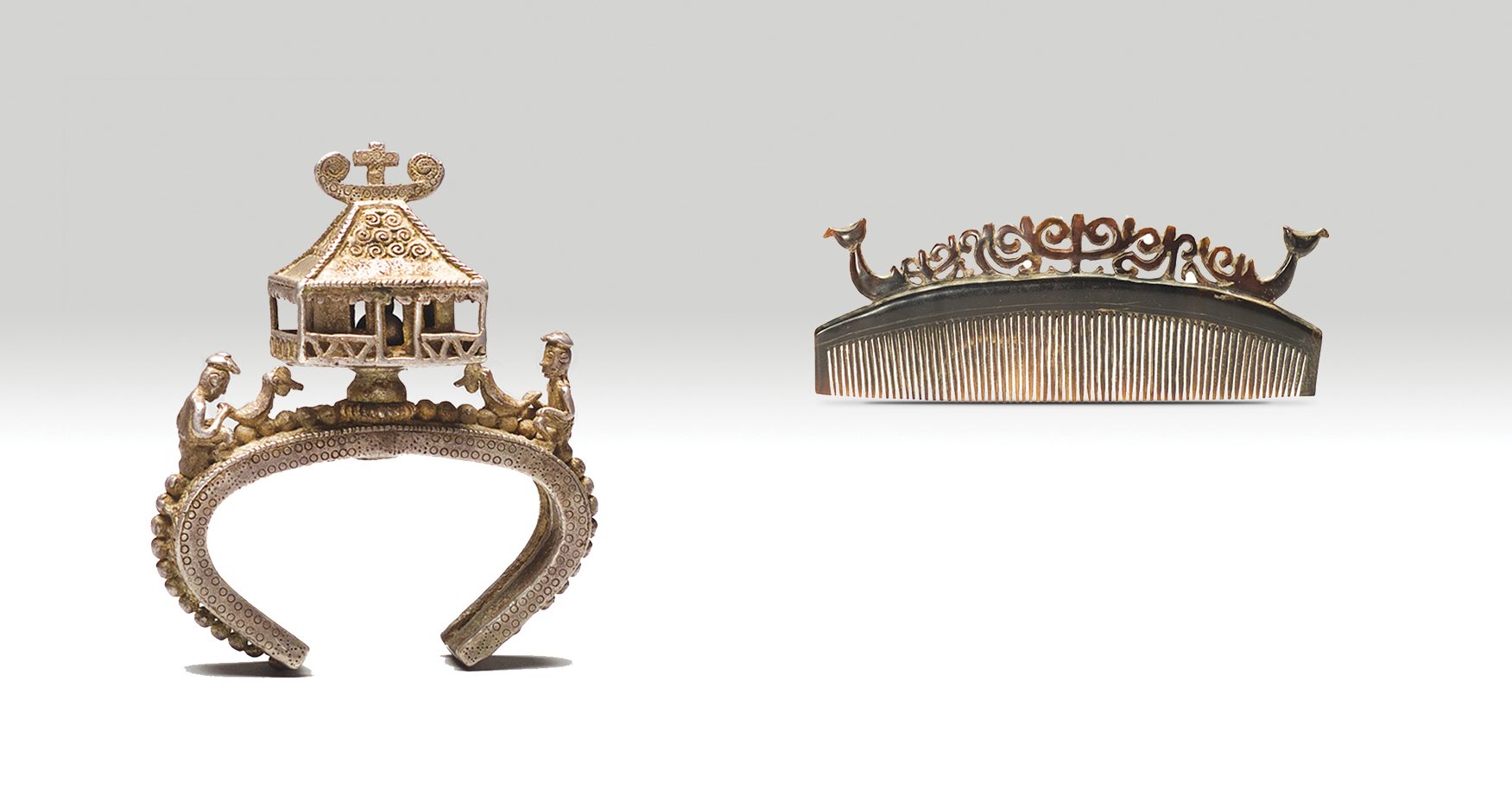
While there is a wealth of indigenous art stretching across the ages from across the globe, there is something special about the art in Portuguese-speaking countries. There can be no doubt that Macao is in an excellent position to showcase all the wonders these countries have to offer. Indigenous art lives in a sacred place between beauty and the necessity of the everyday. Life, ritual and magic all play an important role in these historical objects. They are much more than just decoration. They are storytellers.
Angolan dolls for all ages

Part of the collection of the ethnology museum is an intriguing collection of dolls from the Angolan provinces of Namibe, Huíla and Cunene in the southwest region of the African country. They were created by the Bantu people, which comprises several hundred indigenous ethnic groups in sub-Saharan Africa who speak Bantu languages, including the Ovambo, the Nyaneka-Humbi and Herero groups – as well as non-Bantu peoples. The dolls in the museum’s collection date from between 1938 and the late 1960s.
What is most striking about the dolls is perhaps the bold fabric colours – mostly shades of red – in their dresses and the smooth wooden spheres as the heads. We are told by the museum they are rare examples of objects that serve both as toys and as important vehicles for fertility rituals. ‘They are marked by a triple sense of belonging: to a feminine dimension, to a childhood dimension and to a ritual dimension’, a description at the museum reads. It adds that some of the dolls might serve as ‘fertility amulets, used by women and girls in the hope of a materialisation of maternity, while others are girls’ playthings’.
Another, perhaps better known, element of Angolan indigenous art is the multitude of sculptures. “They are mostly carved in wood,” says Ana Cristina Dias, a Mozambique-born lecturer at the University of Macau who has a PhD in comparative literature and the history of the modern world. “Some sculptures may serve a role as ritualistic objects,” she explains, “but they are also a way of telling a people’s history.” The Chokwe people, who are found in Angola, as well as the Democratic Republic of the Congo and Zambia, ‘are among the most representative of this’, she says.
Dias says that the Chokwe kingdom was centrally located in Angola and developed considerable trade routes in the 19th century. This gave them access to ivory and rubber. It is in this context that they developed their art, says Dias, ‘probably in an attempt to mark their position as powerful traders, capable of competing with Western powers’. Many of the carvings are portraits representing the royal lineage. Staffs, sceptres and spears are among other objects that celebrated the court. The chair that can be seen above is a rare example of a folding chair, made not only in wood but also with soft, animal fur.
The masks of the Chokwe people, which often include real hair, are also beautifully crafted in wood. “It is important to understand,” says Dias, “that these masks often have a mystic dimension, representing the spirit world. They are worn by both genders in rituals for fertility and prosperity.” The Chokwe people, as many other ethnic groups, move around regardless of political borders as they existed before those borders were in place. The Kongo people can also be found in both Angola and Congo. However, despite similarities in the geographical regions, the art from these two peoples is different, as can be seen from the main image on p33.
Artists and warriors from Mozambique
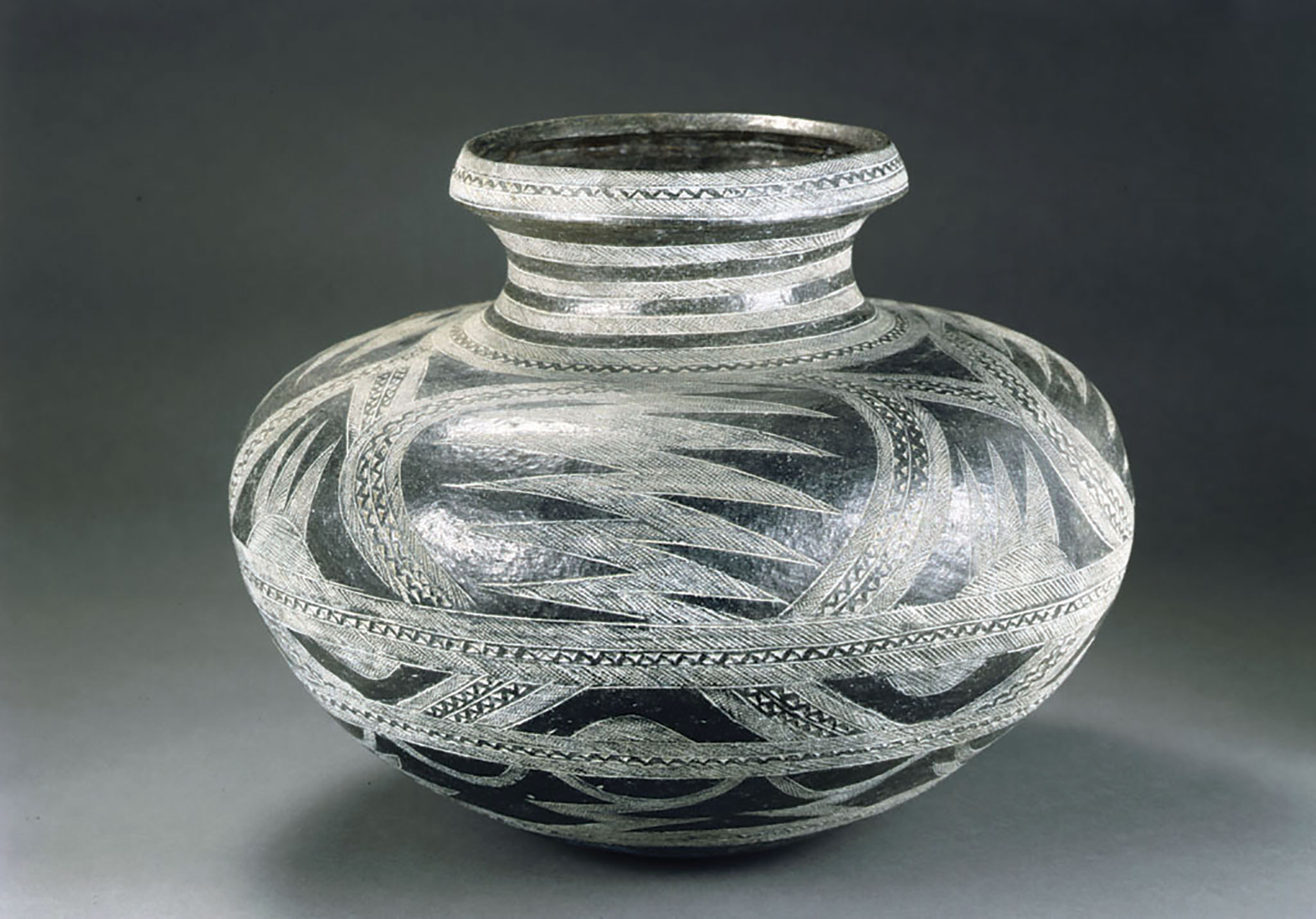
The Makonde people can be found in both northern Mozambique and southern Tanzania. “The Makonde Plateau,” says Costa, “was the study of anthropologists Margot and Jorge Dias as well as Manuel Viegas Guerreiro, in the 1950s. They managed to revolutionise the study of ethnology with their usage of film and sound recordings. It led to a four-volume publication on the subject.”
Costa says that it is thanks to that team that the ethnology museum in Lisbon was created and holds such an important collection on the Makonde entitled ‘Life and Art of the Makonde people’. “It was the collection of objects gathered on Margot and Jorge Dias’ several visits to the plateau,” he adds, “that led to the idea that it would be interesting to showcase all the other material gathered by the team during the 1940s.”
Despite contact with Christianity and Islam, the Makonde have retained their indigenous religious beliefs and their practices focusing on the celebration and remembrance of ancestors. They are fearless warriors who have strongly opposed colonial rule in the north of Mozambique. Their art, especially their wood carvings in ebony, is an essential part of their lifestyle and, today, a source of income for the community.
Makonde art can be divided into three main areas: household objects crafted with care to hold aesthetically pleasing elements, masks used in rituals and sculptures, many of them with no purpose other than to serve as decoration. All of these elements started to be sold to tourists from the 1940s, an economic activity that helped shape their reputation as internationally recognised artisans and artists.
Mystical Guinea-Bissau
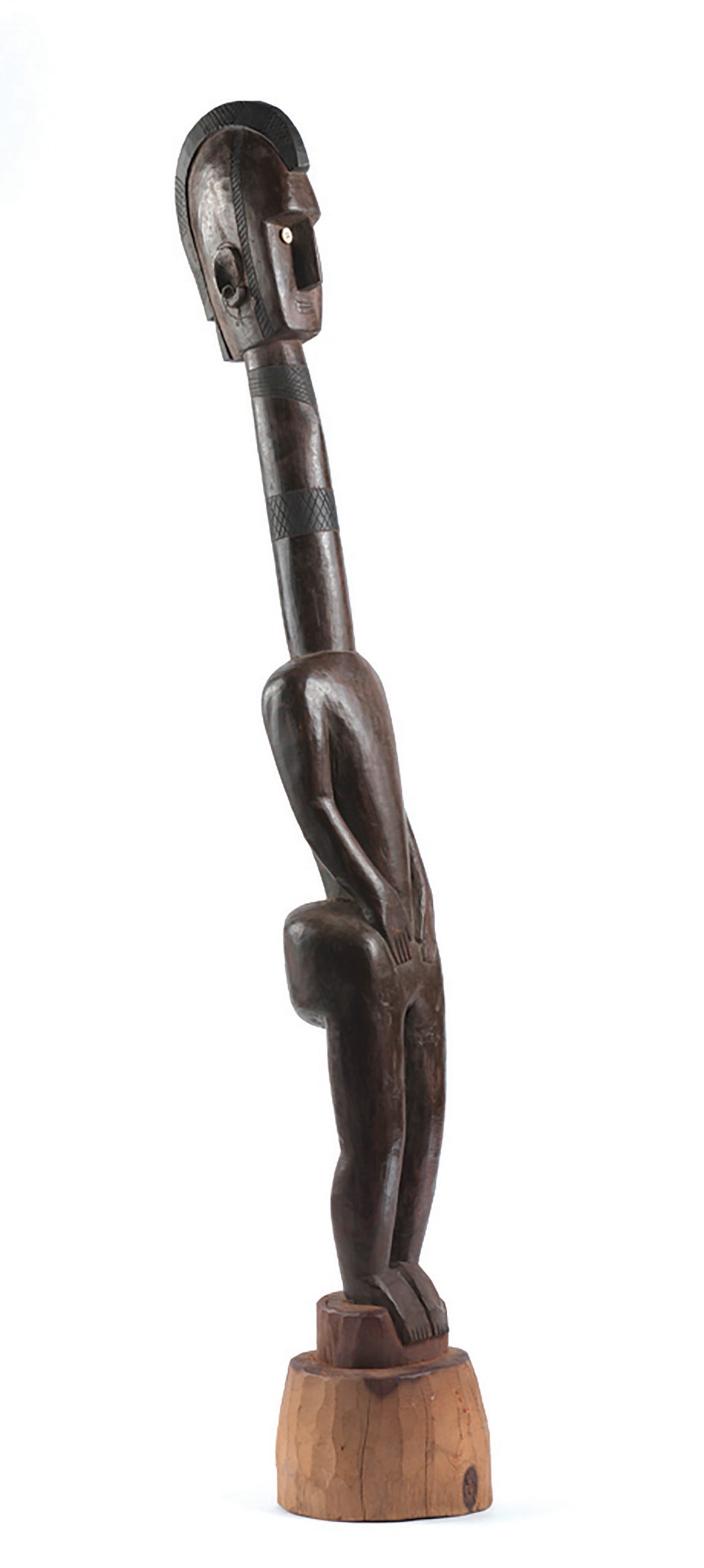
Ana Cristina Dias explains that Guinea-Bissau has its origins in the kingdom of Kaabu. “The Portuguese reached Bissagos Islands in 1446,” she says, “and started exerting their influence. However, it wasn’t until the 19th century that the country resembling today’s borders was formed.” Guinea-Bissau, notes Dias, is therefore a profoundly diverse country ‘with a lot of culture and art to share’.
One of the main cultures is the Nalu, with a population of around 20,000. “The Nalu people are said to have their origins in Sudan where they were recruited to work in Mecca as slaves,” says José Valberto Teixeira Oliveira in his online project dedicated to give a voice to this community. He says they reportedly escaped from the sacred city to Mali and, from there, to Guinea-Bissau. In their unique form of animism, the Nalu follow Allah at the same time as consulting shamans, believing in spirits and remembering ancestors. Wooden figures, often worn or carried in the form of masks, are used in initiation rituals. Large wooden serpent figures also appear at ceremonies and carved anthropomorphic figures are placed on shrines.
The Bissagos Islands, also known as the Bijagós Islands, are also home to Bidyogo art. As we learn at the University of Iowa Stanley Museum of Art in the US, which houses many artefacts from indigenous peoples across the world, the Bissagos
natives dedicate a part of their lives to fishing and cultivating rice. Made of wood and often making use of colour, Bidyogo statues are carved to house the spirits of ancestors. Seated figures are usually used for divination and magic. It is said that the art in this region is unique compared to the rest of Africa.
The art of Amazonas
Indigenous art in Brazil is also unique. The country, now composed of 27 states, is considered to hold the ‘world’s lungs’: the Amazon rainforest. The Amazonas state is almost entirely rainforest and it said to be home to more than a thousand different tribes. Roberval Teixeira e Silva PhD, assistant professor at the University of Macau and a specialist on Brazilian studies, says: “It is probable that the indigenous artists in Brazil don’t see themselves as artists. Their art is almost an everyday necessity.”
The special weaving of baskets and the meticulous work that goes into creating darts with feathers ‘are but the way of life these people and their ancestors are used to experiencing’, adds Silva. The same goes for the extraordinary effort that goes into preparing community members for rituals, he says, whether it is creating intricate body painting or adding feathers to the ornamental headbands or ‘diadems’.
Silva says: “These unique artefacts serve a dual purpose. On the one hand, they show us the way in which a community lives, telling us about their rituals and habits. On the other hand, they showcase the aesthetic sense of whomever has created the object.” That is why creating a platform in Macao to showcase this type of art is, as he puts it, ‘necessary’.
Silva also mentions that one of Brazils’ Pataxó people, Nitinawa Pataxó Pataxó, visited Macao in 2014 to attend events she had been invited to and to give a talk at the University of Macau. “She is a very active voice for her community, fighting for their rights and protection,” says Silva. “At the time, she paraded in full traditional costume and brought artefacts.” He says her visit was successful, ‘proving there is a public for these initiatives’ in the city. “Nothing bad can come from sharing culture or art,” he says. “In the end, this is what brings us together and what makes us see each other as humans.”

The magic of theatre
The African islands of São Tomé and Príncipe were uninhabited until their discovery by the Portuguese in 1470. “However, they were only truly ‘colonised’ in the 16th century,” explains Dias, who says the nation became an important centre for the Portuguese as a ‘commercial stopover in the Atlantic Ocean’. “Coffee and sugar grew well in the islands as they are so close to the equator,” she adds.
As a result, the art history in São Tomé and Príncipe stems from the late 15th century onwards. “I strongly believe,” says Dias, “that its most interesting and unique art is its tradition of theatre. European in nature, mostly in its themes, the ‘tchiloli’, meaning ‘theatre’ in the local language, derives from 11th century Carolingian tradition, from the time of the Frankish dynasty that was established to rule western Europe in the eighth and ninth centuries. Actually, Charlemagne, the King of the Franks and Holy Roman Emperor during that time, is the theme of the most famous piece in the islands. ‘The Tragedy of the Marquis of Mantua and the Emperor Charlemagne’ is a play written in the 16th century by the blind Madeiran poet Baltazar Dias but it was adapted in São Tomé
and Príncipe and has become African in the way the story is told. The play can last for days, reminiscent of the storytellers in native societies.”
Actors use unique masks, made of thin nets, with facial expressions painted on them, explains Dias, when performing these plays. “The costumes are often actually from the 16th century,” she adds. “They are kept in the families over the years and are exquisite. Only the men can act, however, following European medieval tradition.”
Poetry, music and clay in the Cape
Similar to São Tomé and Príncipe, Cabo Verde, off the coast of West Africa, was also only inhabited for the first time when the Portuguese arrived in the 15th century. For this reason, it is difficult to speak of ‘indigenous art’. There are, however, many examples of traditional artistic expressions from that time right up to the present day in the 10-island archipelago. The unique miscegenation of African and European cultures led to rich literary traditions, such as the poetry of Jorge Barbosa in the mid-20th century, and musical works, like the songs voiced by Cesária Évora in the 1980s and 1990s.
On one of the islands, Boa Vista, pottery is an important art. Although it started mainly as a way of producing domestic utensils, the unique way in which the clay found on the island was moulded by hand, without the help of a wheel, made it popular for tourists and became an essential part of the island’s economy. Over the years, the craft has been threatened due to modern methods replacing tradition, however, recently young artists are once again becoming interested in the traditional art in a bid to keep it alive.
Weaving away in Timor-Leste
“Legend says that Timor-Leste – until not long ago the newest country in the world – was born out of the body of an old crocodile who sacrificed his life to save the young boy travelling on his back,” says Gonçalo Cordeiro, a specialist on the Portuguese-speaking world based at Université Paris Nanterre who lived in Timor-Leste for a few years and later taught at the University of Macau. He notes that the beautiful peninsula in the Indian ocean is home to the ‘tais’ cloth, a unique woven fabric produced by local women.
Cordeiro says: “Traditionally, men wear the ‘tais mane’, holding it around the waist, whereas women carry the ‘tais feto’, a type of long, sleeveless dress. The colours and patterns vary according to the region but some rules apply. Red, symbolising courage and blood, is preferred and black shows the wearer’s status – the more the colour shows, the more important the person is. Gold is reserved for rituals or special occasions, and births, weddings, funerals, presenting a new home or community events call for specific types of ‘tais’.”
Made of cotton and woven by hand, the ‘tais’ also plays an important role in the livelihood of the communities in Timor-Leste. Everyday objects are now being produced in the traditional fabric, that has retained its magic. “It would be great if we could see a greater amount of Timor-Leste indigenous art in Macao,” concludes Cordeiro. “The two regions have collaborated so much. It would be great if locals could also see and learn more about the nearest Portuguese-speaking country.”

While there is a wealth of indigenous art stretching across the ages from across the globe, there is something special about the art in Portuguese-speaking countries. There can be no doubt that Macao is in an excellent position to showcase all the wonders these countries have to offer. Indigenous art lives in a sacred place between beauty and the necessity of the everyday. Life, ritual and magic all play an important role in these historical objects. They are much more than just decoration. They are storytellers.
